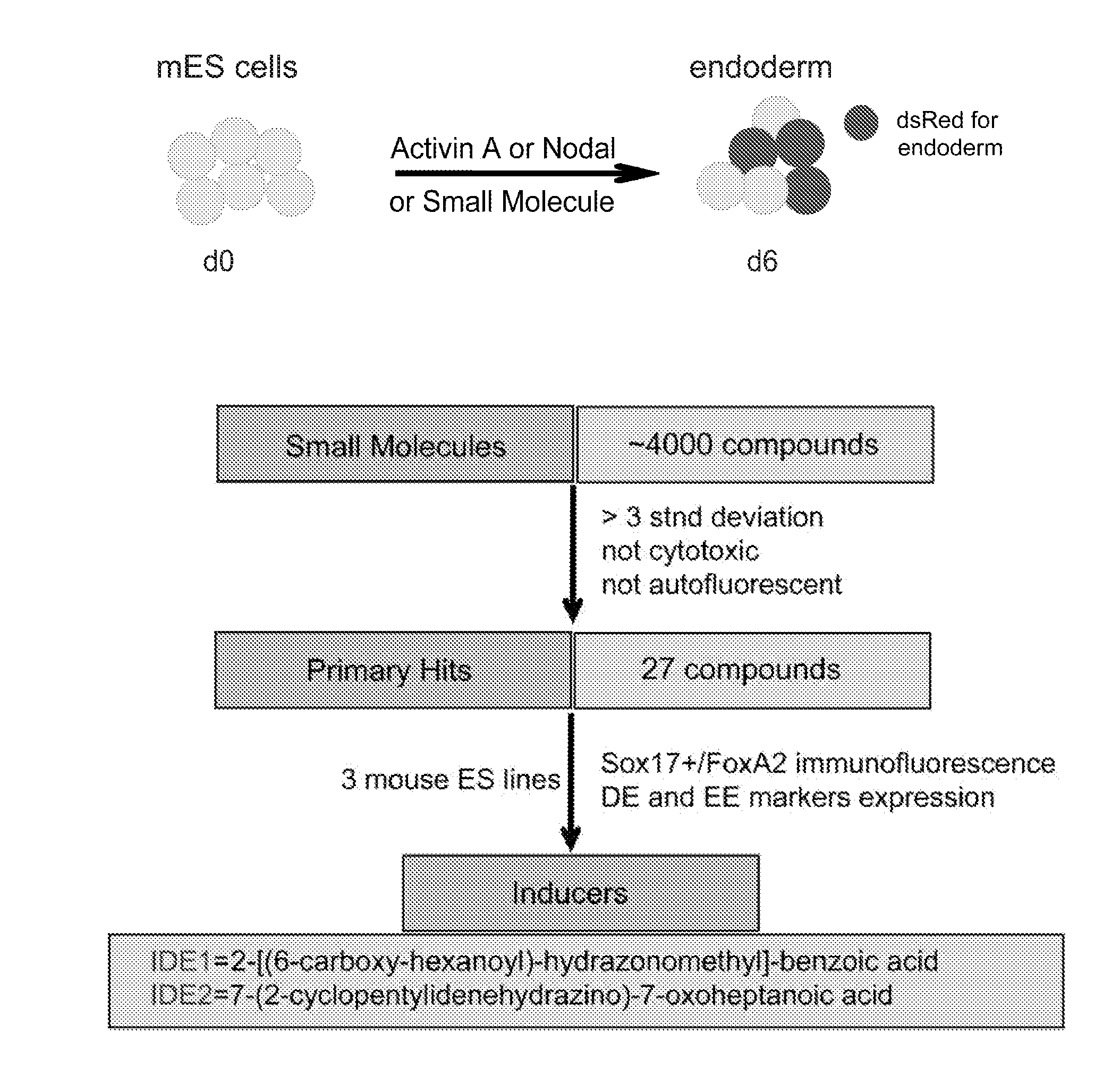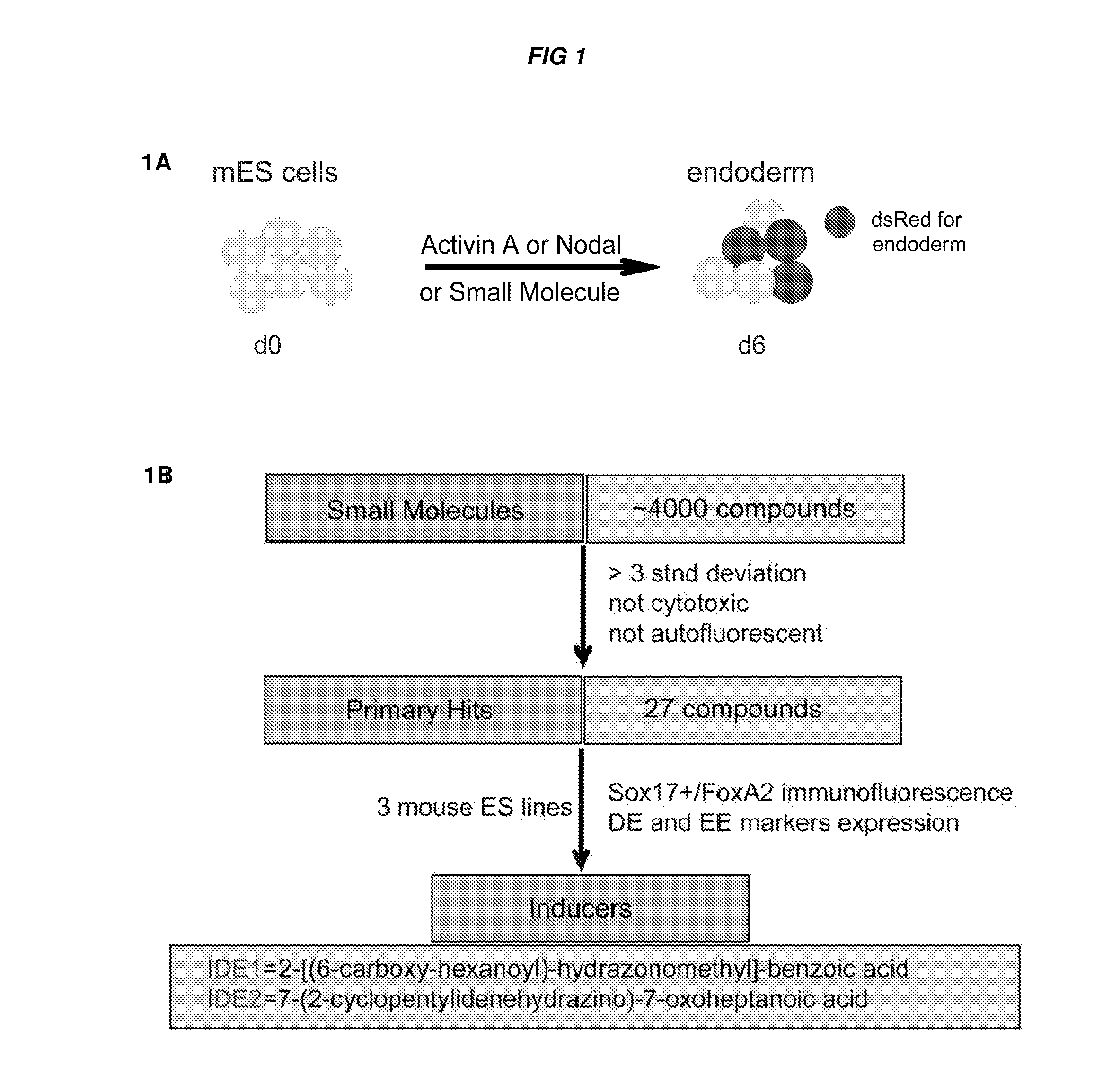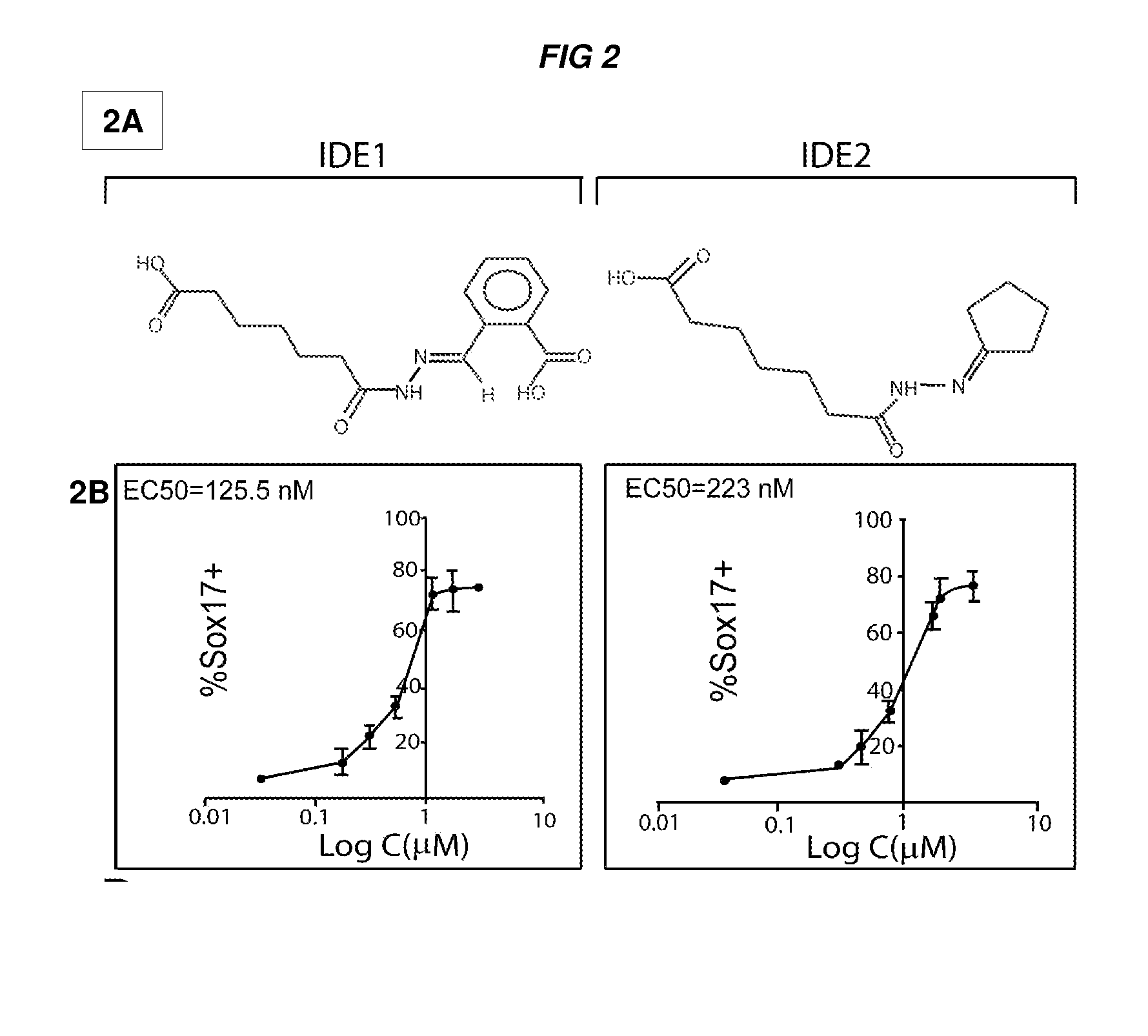Compositions and methods for promoting the generation of definitive endoderm
a technology of endoderm and endosperm, applied in the field of stem cells, can solve the problems of small number of insulin producing cells, insufficient research studies, and far short of the number needed for therapeutic application, and achieve the effect of increasing the efficiency of beta cell formation and efficient and reproducible differentiation
- Summary
- Abstract
- Description
- Claims
- Application Information
AI Technical Summary
Benefits of technology
Problems solved by technology
Method used
Image
Examples
example 1
[0452]Screening with ES Cells for Endoderm Formation
[0453]A screen of 4000 compounds was performed to search for cell permeable small molecules that direct differentiation of ES cells into the endodermal lineage. Two compounds were found to induce nearly 80% of ES cells to form definitive endoderm, an efficiency higher than that achieved with Activin A or Nodal, the two most commonly used protein inducers of endoderm. Chemically induced endoderm expresses multiple endodermal markers, can participate in normal development when injected into the embryonic gut tube and can also be differentiated into pancreatic progenitors in vitro. This protocol to differentiate mouse and human ES cells into definitive endoderm and pancreatic progenitors with small molecules represents a step toward achieving a reproducible and efficient production of desired ES cell derivatives.
[0454]Specifically, describe herein are two small molecules, IDE1 and IDE2 (shown herein in FIG. 2A) that can efficiently in...
example 2
Induction of Definitive and Extra-Embryonic Endoderm.
[0461]During evaluation of primary hit compounds, the inventors observed that small molecules induced Sox17+ cells with two distinct morphologies. One class, including IDE1 and IDE2, induced clustered populations of Sox17+ cells, whereas other compounds led to the formation of a dispersed population of Sox17+ cells. In particular, the Sox17+ cells induced by IDE2 or IDE1 form a compact, epithelial sheet as identified by immunostaining with α-Sox17 antibody, whereas cells are more dispersed following treatment with a different small molecule (XE09), one that also induces Sox17 expression (data not shown). A third class of compounds induced cells with a mixed morphology. Sox17 is expressed in definitive endoderm, but also in extra-embryonic endoderm, and in other germ layer derivatives at later stages of development including vascular endothelium (Kanai-Azuma et al., 2002; Matsui et al., 2006). Since the positive identification of d...
example 3
Gene Expression Analysis of Endoderm Induced by Active Compounds
[0466]To determine whether other genes that compose part of an endodermal signature are induced in mouse ES cell cultures treated with active compounds, Sox17-DsRed+ cells were isolated by flow cytometry after day 6 of compound stimulation and profiled by gene expression analysis. Of nineteen genes previously defined as a definitive endoderm signature in the mouse (Sherwood et al., 2007), fourteen were induced more than two fold in the compound treated samples compared to mock treatment (FIG. 4A). Also compared was in vitro derived endoderm with its in vivo counterparts sorted-out from Sox17-DsRed E7.5-E8.5 embryos. Of these nineteen endoderm signature genes, only two genes, Spink3 and Tmprss2, were significantly different and were expressed at higher levels in the E7.5 endoderm (FIG. 4A). Furthermore, no significant changes in the expression of markers characteristic for other cell lineages were observed, such as the e...
PUM
| Property | Measurement | Unit |
|---|---|---|
| Fraction | aaaaa | aaaaa |
| Fraction | aaaaa | aaaaa |
| Fraction | aaaaa | aaaaa |
Abstract
Description
Claims
Application Information
 Login to View More
Login to View More - R&D
- Intellectual Property
- Life Sciences
- Materials
- Tech Scout
- Unparalleled Data Quality
- Higher Quality Content
- 60% Fewer Hallucinations
Browse by: Latest US Patents, China's latest patents, Technical Efficacy Thesaurus, Application Domain, Technology Topic, Popular Technical Reports.
© 2025 PatSnap. All rights reserved.Legal|Privacy policy|Modern Slavery Act Transparency Statement|Sitemap|About US| Contact US: help@patsnap.com



